Things To Do in Dresden: How to spend a Weekend in Saxony’s Showstopper
This website uses affiliate links which may earn a commission at no additional cost to you. As an Amazon Associate I earn from qualifying purchases.
Updated: 31st July 2018
In only four days I had seen classical opera tenors have sing-offs with 21st-century DJs to the backdrops of castles and fireworks, watched the sun set behind the lovingly restored Baroque skyline of Dresden before sauntering off to sink hipster brews in it’s modern, street-art strewn quarter, and spent the morning hiking through towering sandstone rock formations followed by rehydrating in the shade of a vineyard.
Saxony combines old and new in a captivating cocktail that shouldn’t work, but tastes so good you want to order another round. Mother nature’s most beautiful work sits alongside castles and engineering marvels while the streets and squares of its cities were the making points of crucial historical moments in Europe. If you are after a taster, a long-weekend will whet your appetite but be warned; you might want to head back to this part of the ‘Cultural Heart of Germany’ sooner than you expected.
A weekend in Dresden
The capital city of the region, Dresden was both a delight and a surprise. While Berlin, Munich and Cologne had been on my travel radar, Dresden was one of the unexpected highlights of my trip. The city is compact enough to explore on foot aimlessly, and the grand Baroque architecture, which was restored (and in some case, is still being repaired) following the extensive damage of the war mixes in with renaissance and modernism buildings. At nearly every turn you’ll be in a mix of awe at both the city, but also the fact the streets aren’t thronging with tourists.

Read More:
Dresden Christmas markets
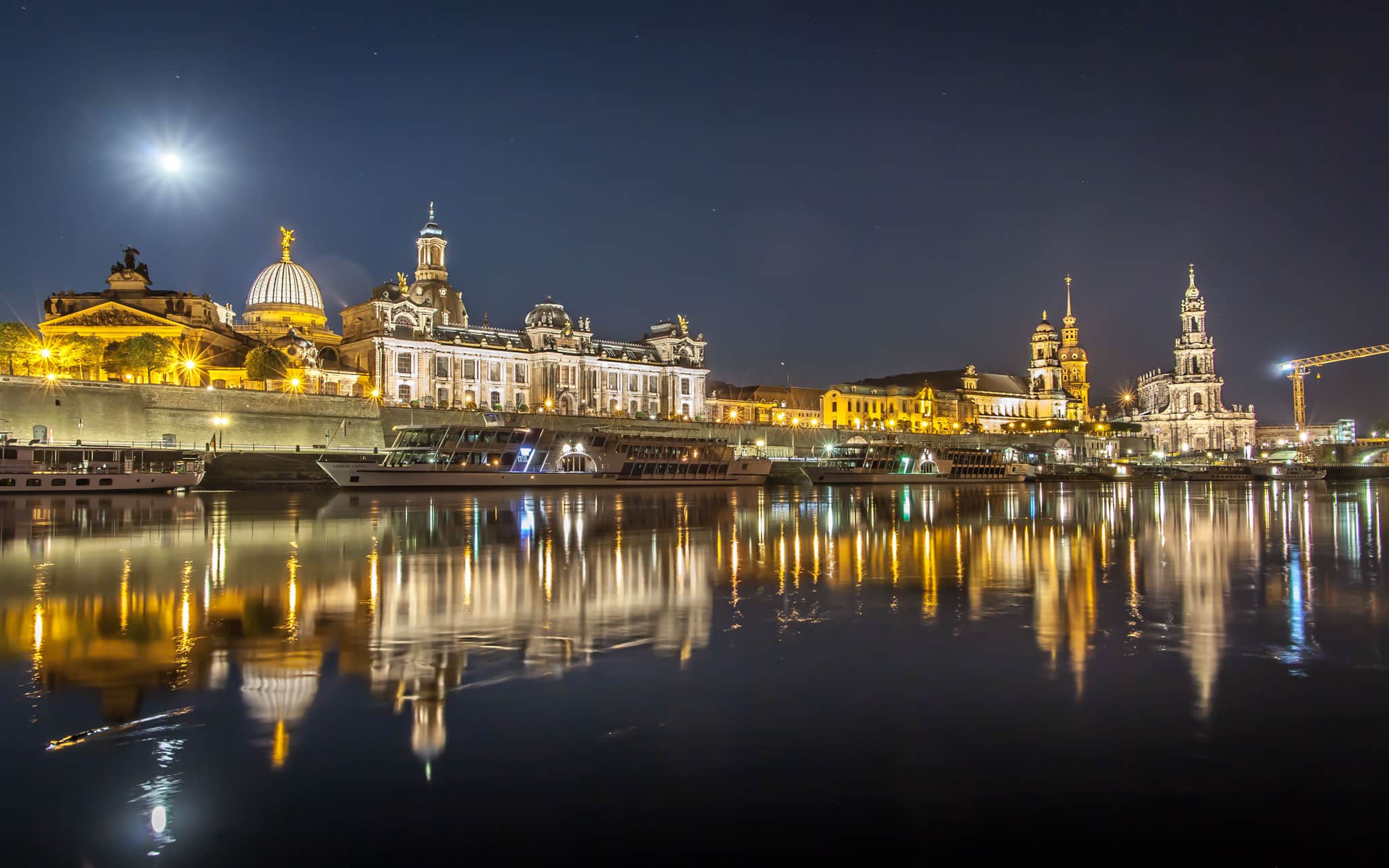
It’s at night the city really stole my heart though; the dancing reflections of grand architecture in the Elbe river and the bustling market square serving over-priced beer to the sounds of street performers and glowing gold domes created some kind of magic. Indeed, Dresden might not be a mega-city that never sleeps, but it’s a city you can happily walk for hours at night, long after the last shop shutter has closed in the old-town. The Christmas markets in Dresden are magical, making it a fantastic Europe winter destination too.
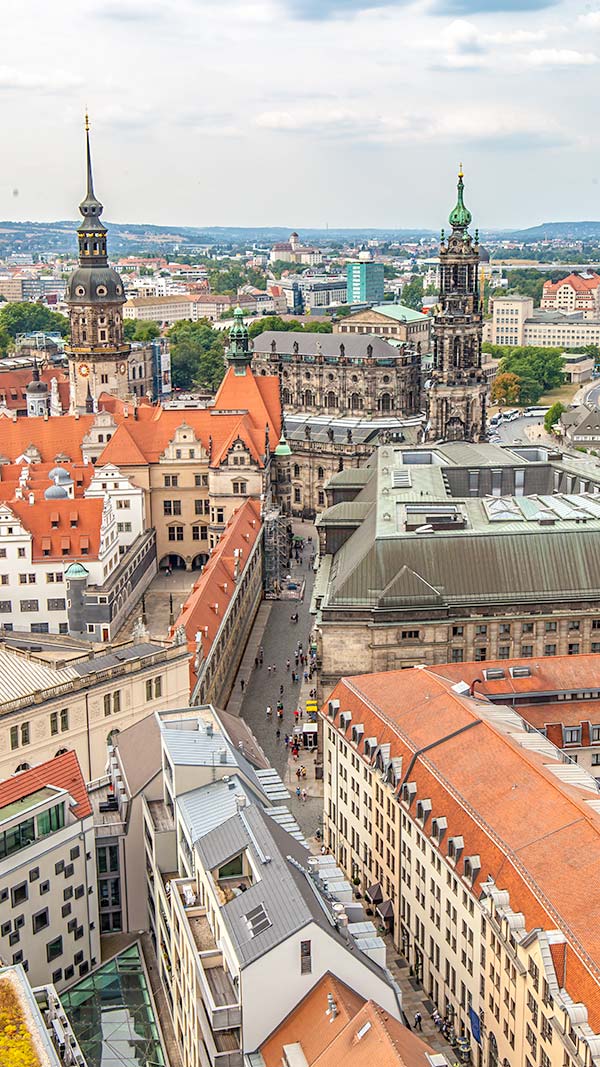
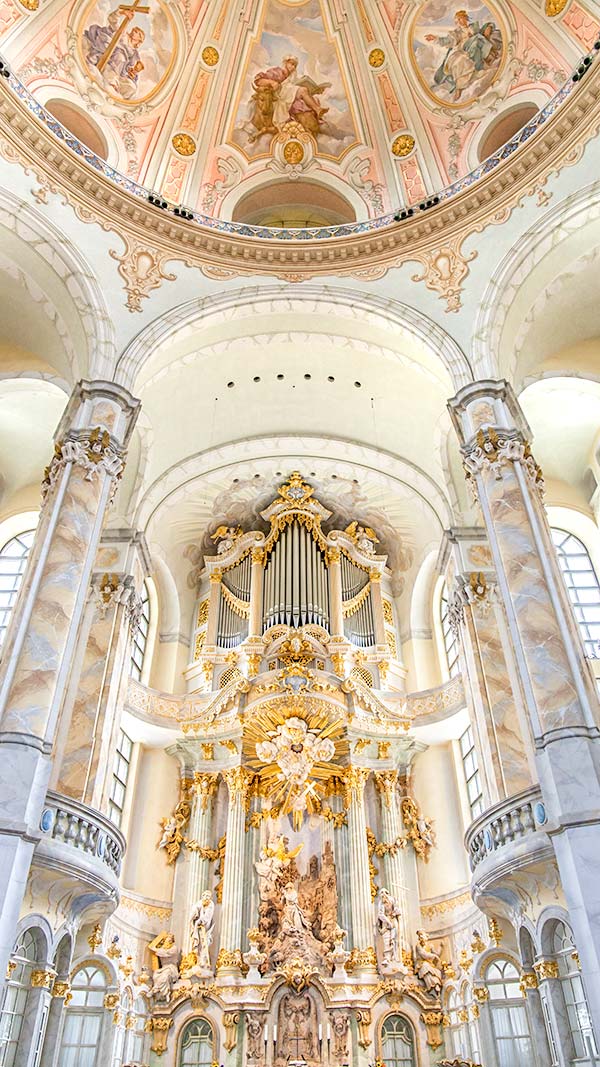
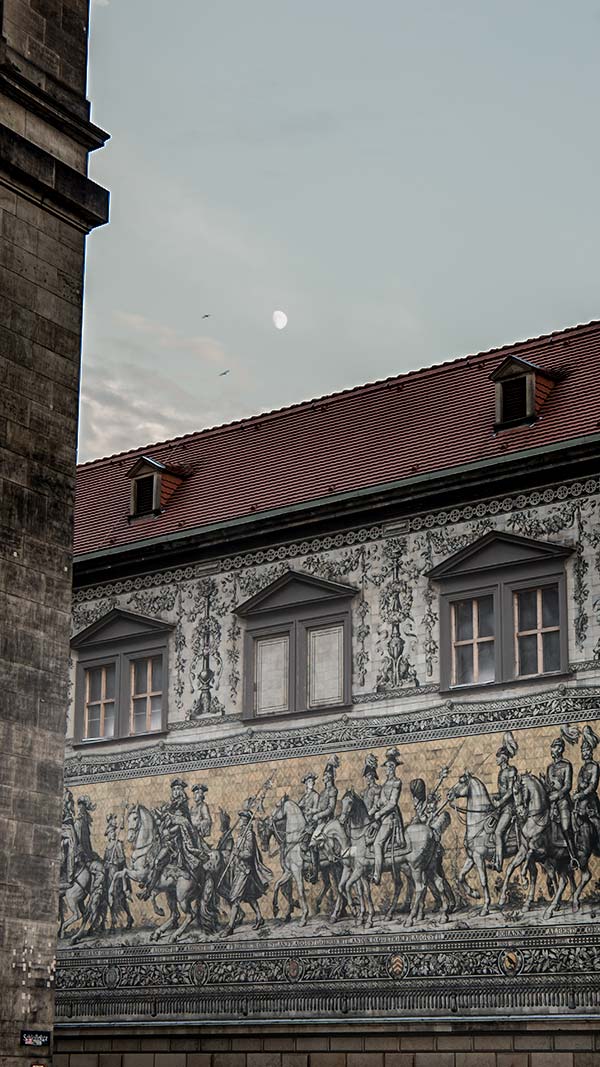
Walking through the old town, you are spoilt with architecture. Hofkirche, the Cathedral of the city sits alongside Dresden Castle, one of the oldest buildings in the city and the former Royal Palace.
A moment’s stroll will take you to Semper Opera which, although grand, sits in the shadows of Zwinger, one of the most impressive architectural feats in the city.
Zwinger is a beautiful example of Baroque architecture, and this palace served as the gallery and exhibition space of Dresden Court. The interior courtyard is a mix of gardens and fountains, and art exhibitions can also be found here. It’s also free to wander around the courtyard, and if you don’t want to pay entrance fees in Dresden, it’s perfect as so much of the cities best features are open air.
Following the Fürstenzug, a giant titled mosaic that lines the walls of the stables will take you to the main square where the imposing Frauenkirche, the church of our lady, dominates your eye-line. Inside is impressive as are the views from the top and if you want a birds-eye view of the city the tower climb fee is a good investment.
Of course, the city is so much more than the old town. The central public park, Grosser Garten, is a mix of people taking picnics and relaxing by the lakes. For car-fanatics, the large glass VW factory sits next door.

Read More:
Day trips from Dresden
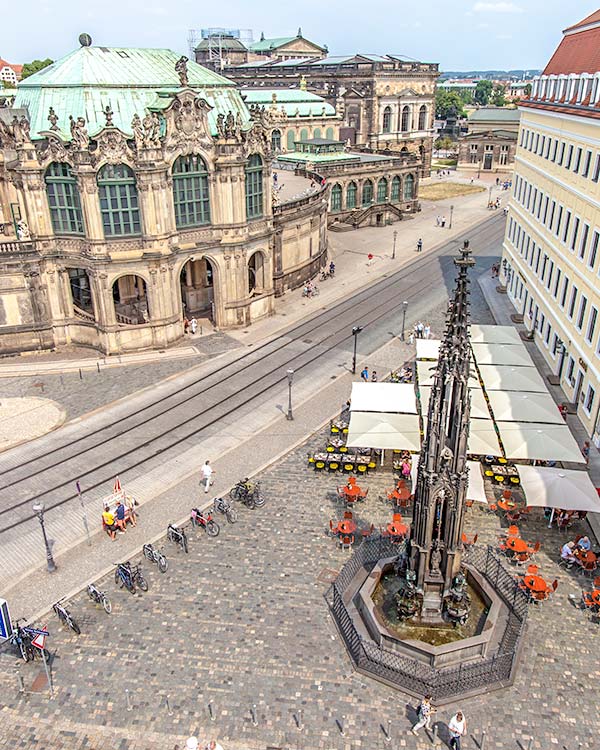
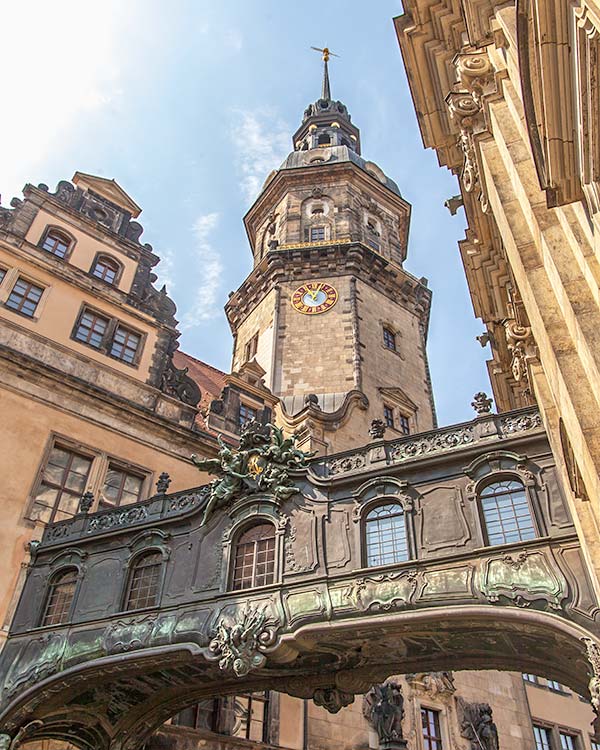
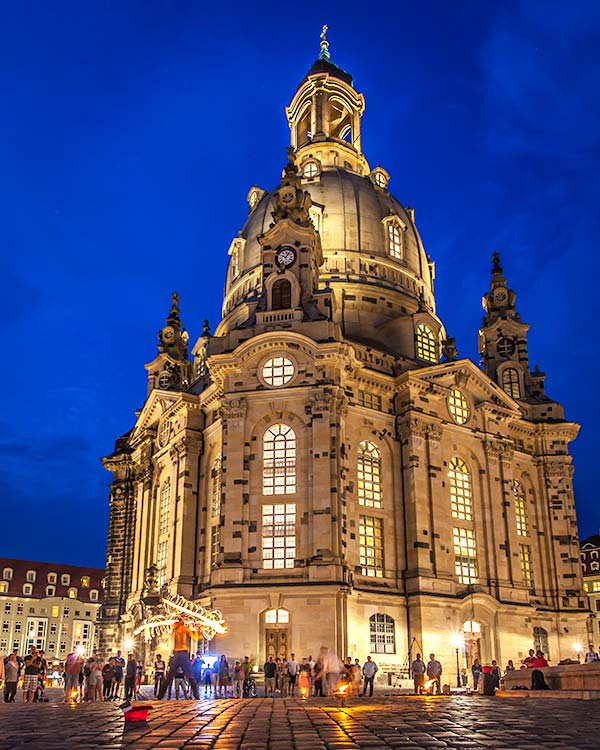
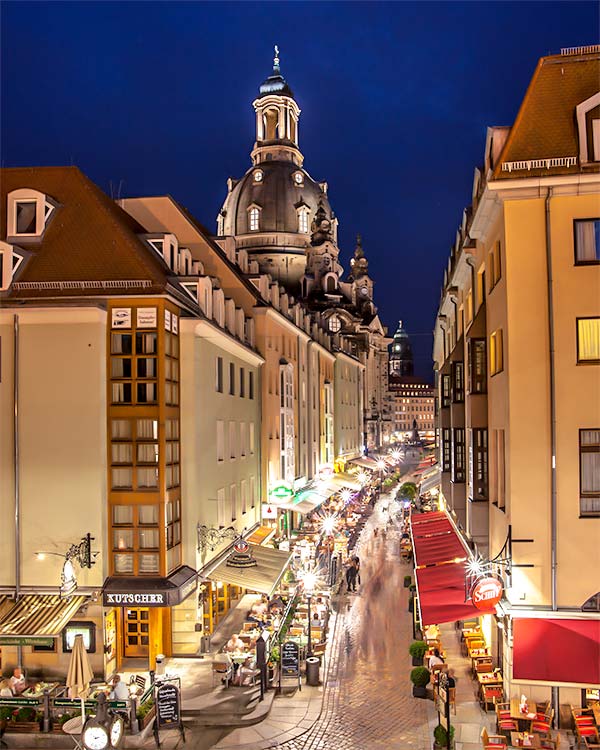
Out of the old town
Across the river, the trendy hotspot of Dresden-Neustadt is where you’ll find the cities cool kids hanging out under street-art murals and in cafes and bars crammed full of personality. In summer, a relatively empty space comes alive with the Schaubudensommer event, a mix of live shows, outside boozing and art installations. It’s no Berlin, but the vibe is relatively similar in this part of town.
A short journey out of town will take you to some of the oldest, and cutest, houses you can find. Dresden-Loschwitz is a more upmarket part of the city and almost feels like a separate village. The Schwebebahn, a suspension style funicular offers some excellent vantage points of the Elbe and Dresden, and it’s one of the oldest original suspension rails in the world.
Culinary creativity
If you’re a foodie and the idea of dumplings, cabbage and bratwurst (let’s get all the German food stereotypes covered eh?) doesn’t appeal then you are in luck. Dresden is going through somewhat of a culinary evolution and from the tender lamb, and delicate-cooked fish dishes at Alte Meister alongside Zimmer to the buddha-bowl style white cloth rooftop of Felix with birds-eye views the menus here were an eclectic mix. Lila Soße in new-Dresden serves up all its small creative dishes in jars alongside little shops serving up cuisine from around the world.
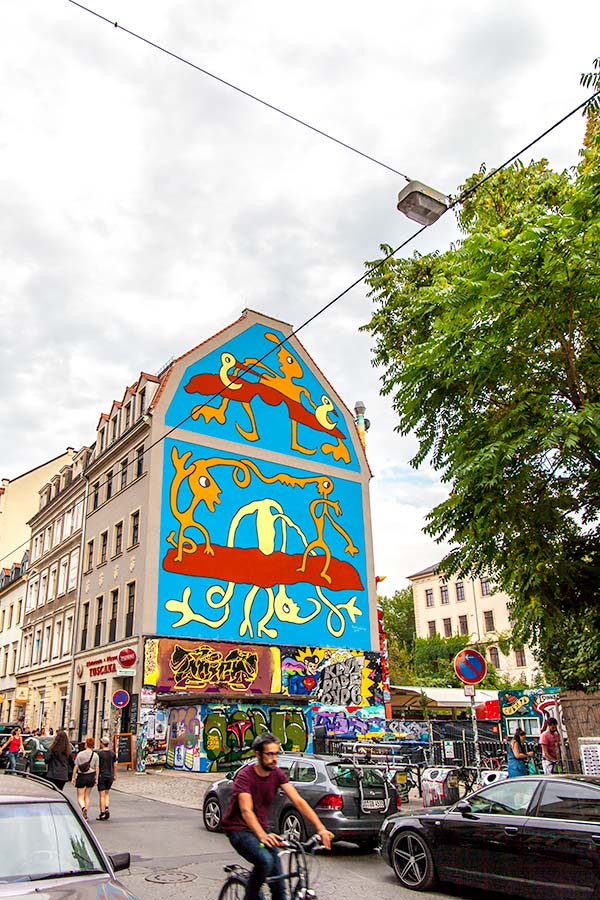
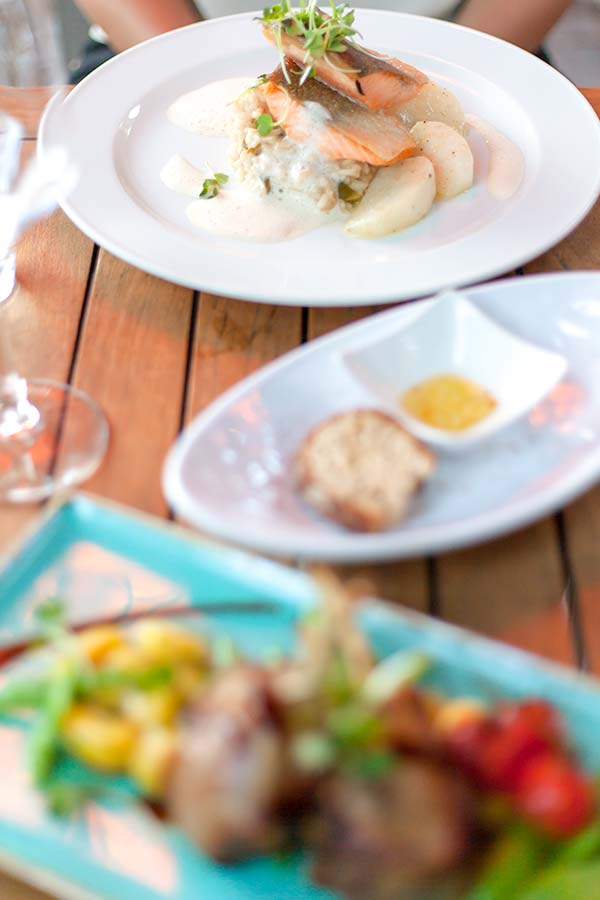
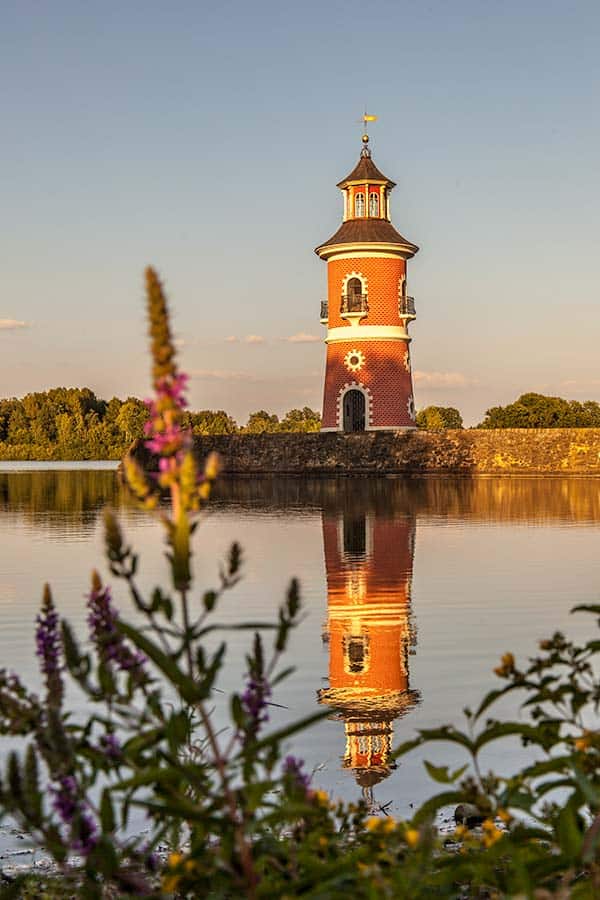
The Elbe River
The Elbe River plays a massive part in the life of Saxony and Dresden, for some of the best views head to the water-banks for some reflections of the old town and if you are around in the summer, an open-air theatre and nightclub pop up in addition to the many beer gardens along the river route.
The Elbe Cycle route links the mountains of the Czech border through Saxony right along the river.
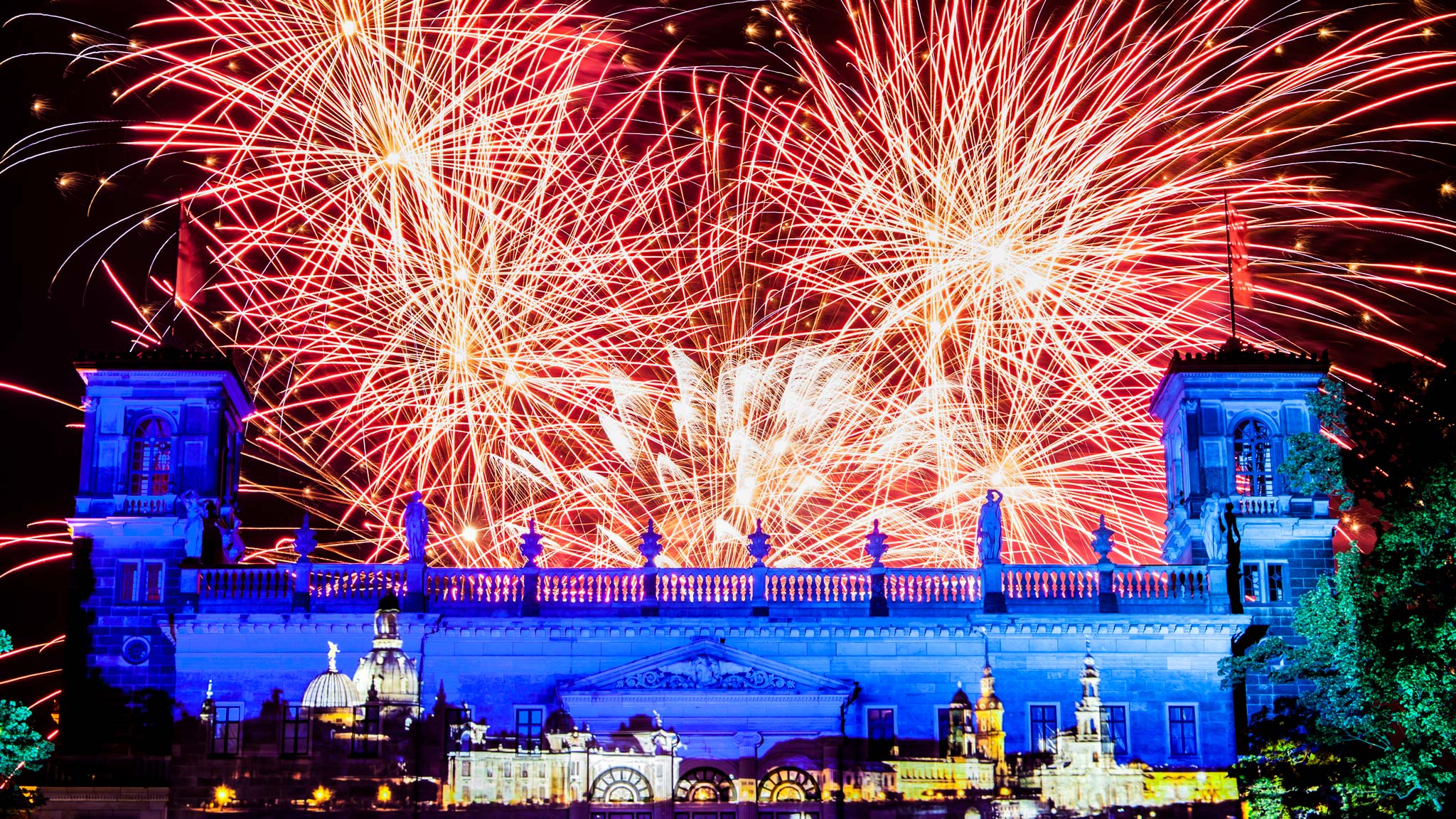
Local Castles
The Albrechtsberg Castle (and a few others) sit between Dresden and Loschwitz along the river banks and for one night of the year in summer they come alive with fireworks, music and everyone puts on their dapper outfits to sip wine in the courtyards of the castles for Schlössernacht.
If you still need more of a castle fix a short drive out of the city will take you to Moritzburg Castle (sitting pretty in a lake) and Little Pheasants‘ Castle which is bright pink, the same colour as the little lighthouse on the lake watching over it.
If you are planning to try and explore more of Saxony during your long weekend to Dresden then hiring a car will help. While the public transport and trains in the region are pretty decent, you can maximise your time with a couple of days car hire.
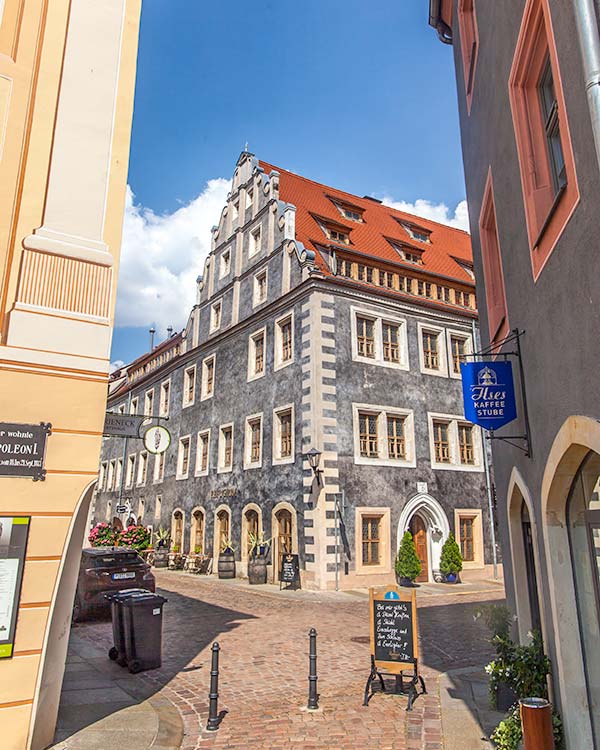
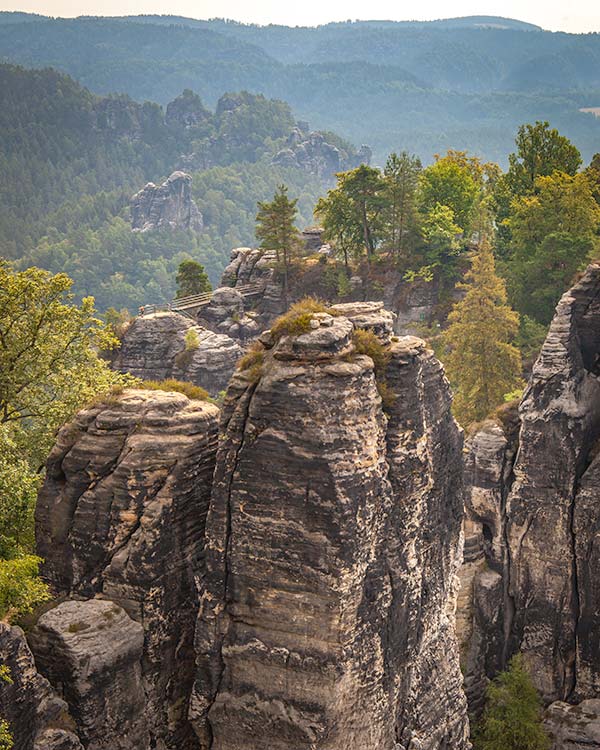
Pirna and Bastei
Pirna offers up a much smaller German town vibe with a colourful main square and many little streets of boutiques coming off it. It’s also a fantastic gateway to Saxony Switzerland National Park.
Sitting alongside the Czech border this lush green space is crammed with towering trees, day-hikers and the imposing sandstone mountains that seem to balance precariously from the river bed below.
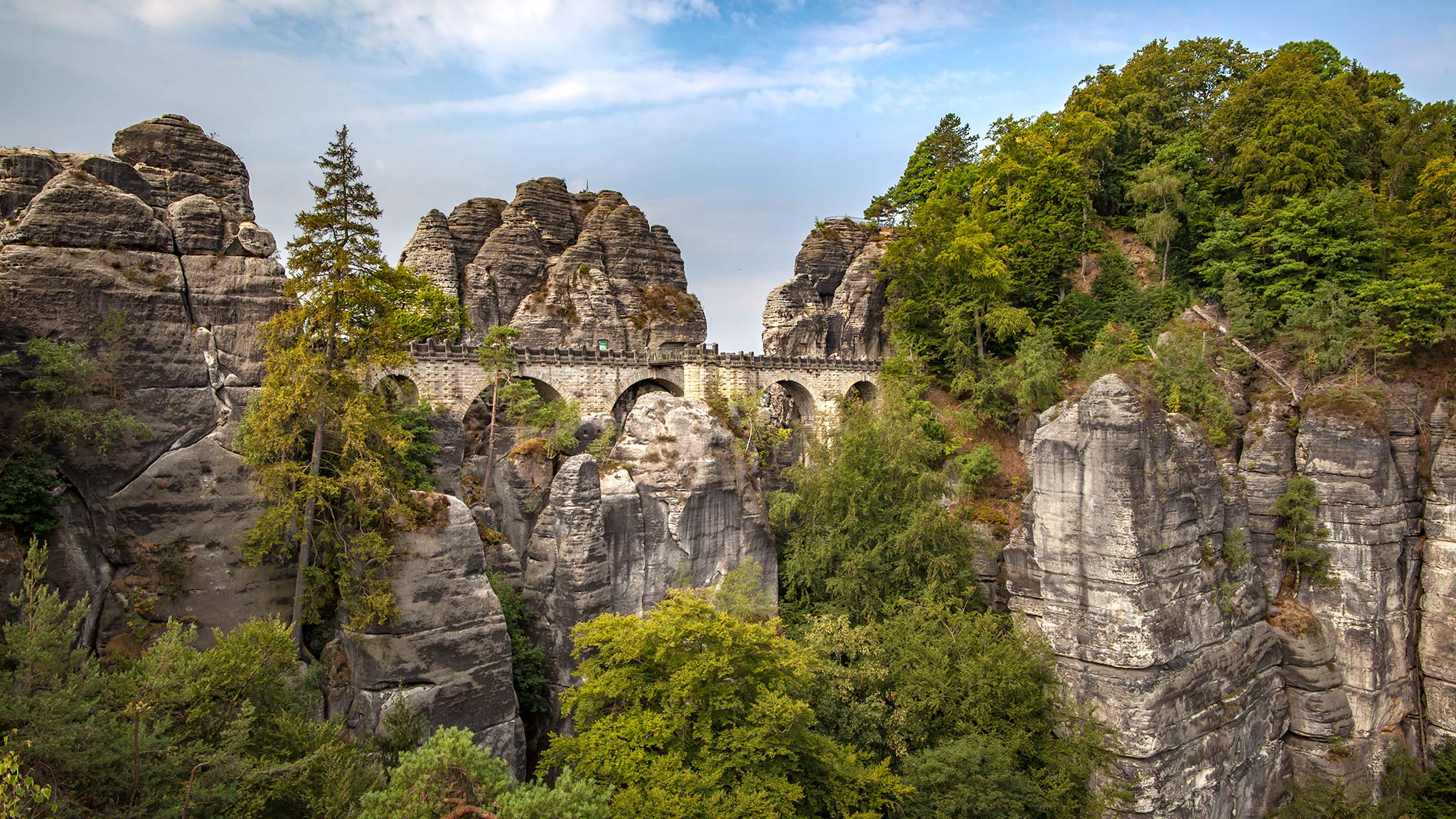
Perhaps the most famous point to take in the park is at Bastei and the Bastei Bridge. Initially, a wooden bridge to link together these rocks, some up to 194-metres high, which had homes atop of them, it was eventually replaced with a sandstone bridge that has quickly become one of the regions most popular tourist attractions.

Read More:
Best places to visit in Saxony, Germany
Zimmerling Winery
After a hike, you’ve earnt yourself some wine so book in for a tour and tasting at Zimmerling Winery. A fully eco-winery where the vines rise up the hills and the passionate staff will guide you through the local German grapes that they produce.
Polish sculpture, Mrs Chodakowska also has her studio here and her incredibly life-like works can be viewed in the cellars and small galleries.

Read More:
What to do in Leipzig
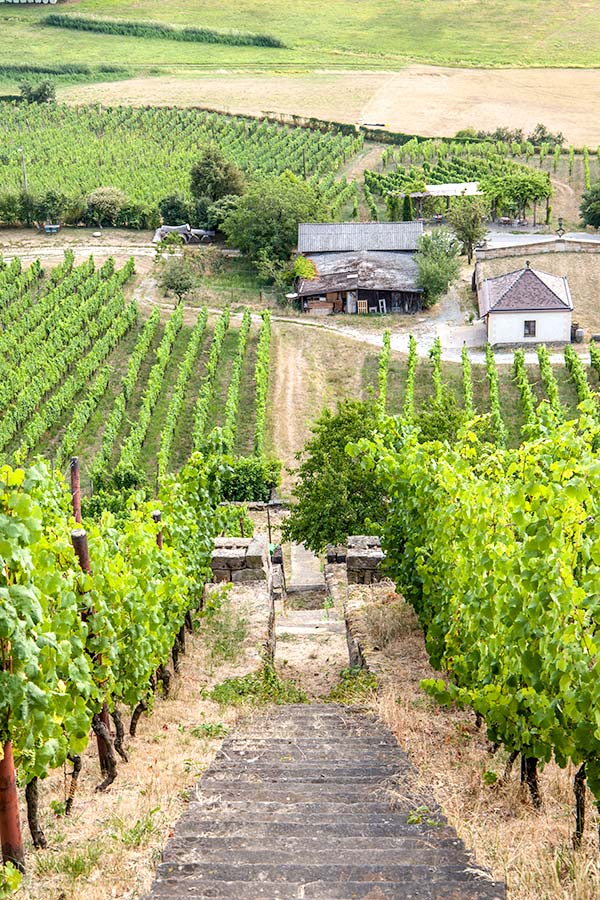
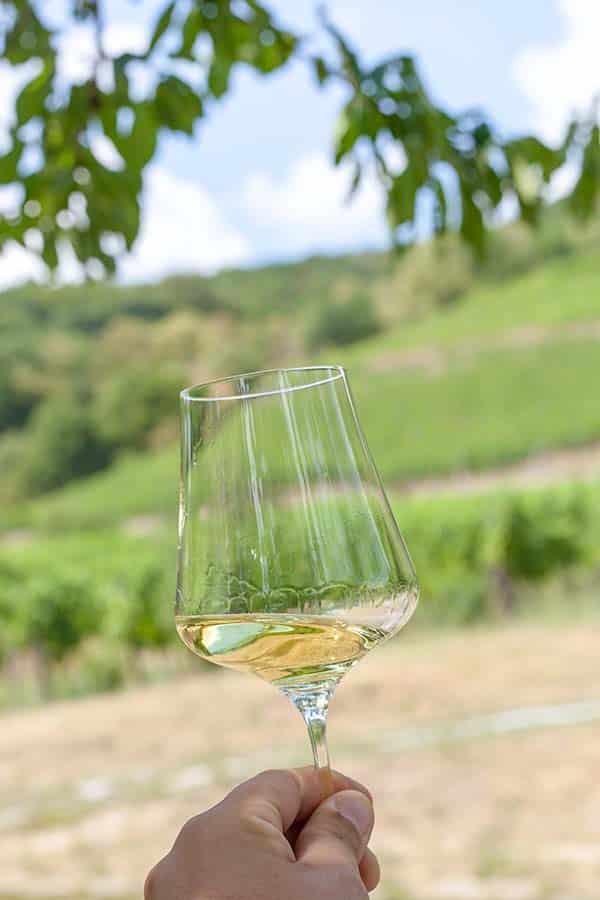
Good to know:
Getting around: You can get discounted train travel in Germany if you book your ticket and hotel together, this is available as a bonus to foreign tourists visiting the region and can be booked online.
Getting in: Dresden and Leipzig both have their own airports, but I actually flew to Berlin, which is only around two-hours by fast train from Dresden, but given how hellish and embarrassing Berlins airports are for a capital city I’d suggest trying to come into the local, regional airports for a better experience. You can find relatively cheap flights to Germany throughout the year from many budget carriers.
More information: Available from the local tourist boards: Dresden | Saxony | Leipzig
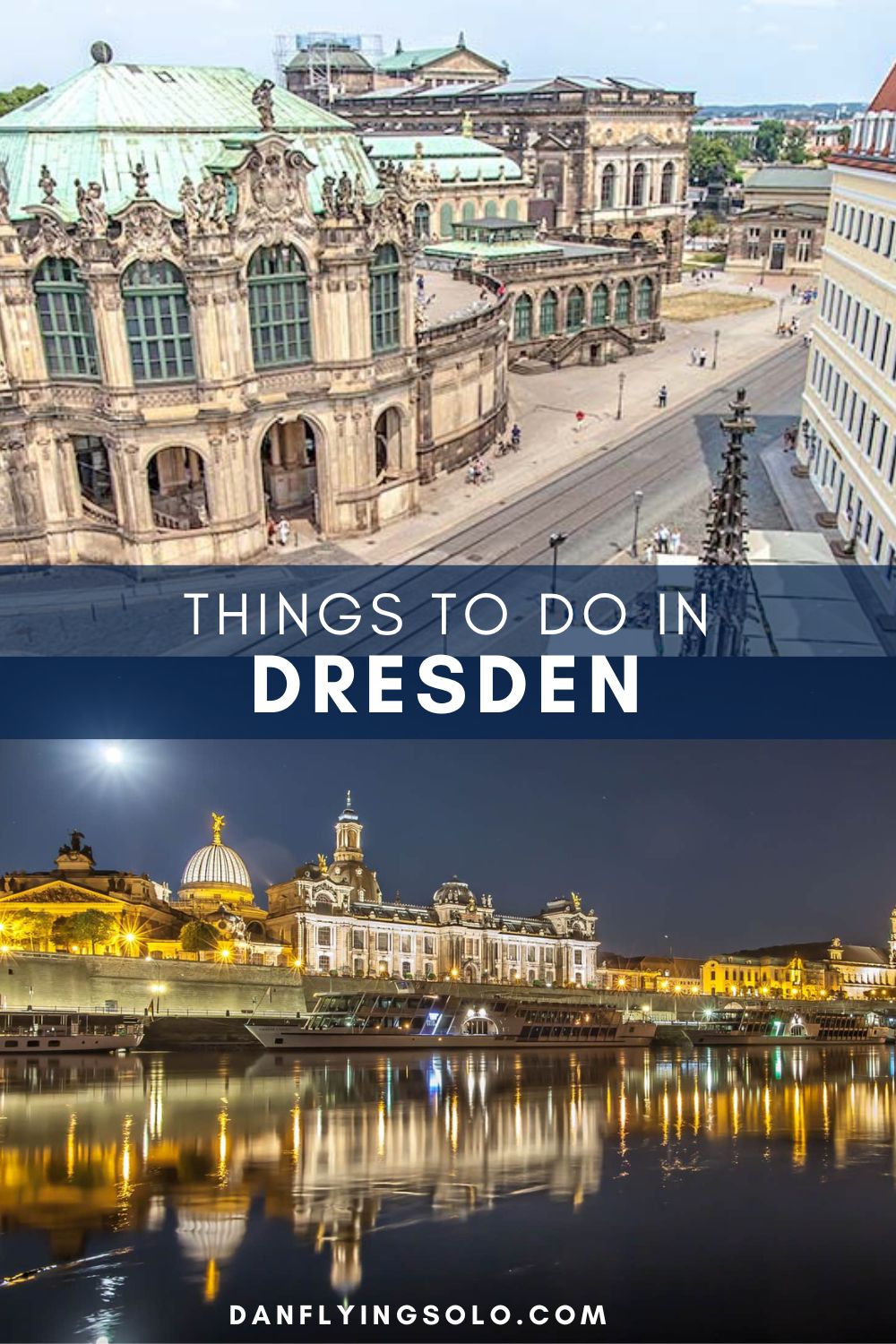


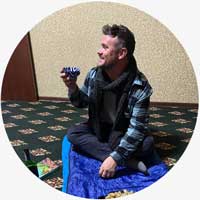


Some great pictures mate! What camera are you using?
Thanks mate, I’m on the Canon 5Dii
I know surprising little about most cities in Germany. It’s surprising because I live in the Netherlands, which means most destinations in Germany are reached within a few hours by car. I did always have Dresden on my radar. Somehow I always wanted to go to Berlin, Dresden & Prague during one trip. Reading your post I’m thinking Saxony deserves a longer visit!